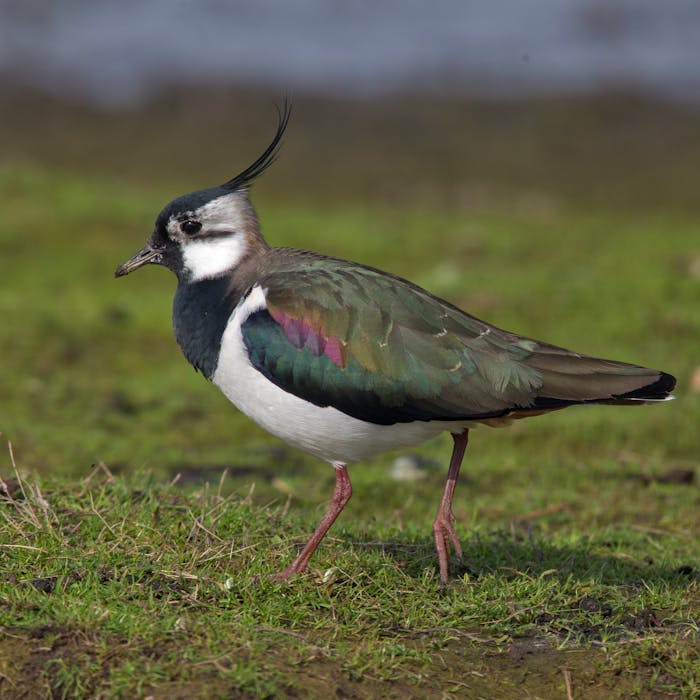
The lapwing or peewit
Lapwings are birds of farmlands and wetlands, and can often be seen wheeling through winter skies in large, black and white flocks.
In spring, these flocks disperse and some birds breed in the UK.
The Northern Lapwing is also known as the peewit - in imitation of its display calls. "Lapwing" is a reference to its wavering flight.
Lapwings can be recognised by their long crests, black and white patterns, and very broad, round wingtips. From a distance, Lapwings look black and white, but up-close, the back has an iridescent green and purple sheen.
The highest known winter concentrations of lapwings are found at the Somerset Levels, Humber and Ribble estuaries, Breydon Water/Berney Marshes, the Wash and Morecambe Bay.
This familiar farmland bird has suffered significant declines due to changes in farming methods since the post-war period. The declines in lapwing population have been greatest in southern England and Wales, where the farming changes have been greatest and farmland is the only suitable habitat for the lapwing. Between 1987 and 1998 lapwing numbers dropped by 49 per cent in England and Wales. Since 1960 the numbers dropped by 80 per cent.
The Government is trying to reverse this decline with agri-environment schemes in each part of the UK which provide grants to help land-owners manage their land to help lapwings.
Further reading
Links to external websites are not maintained by Bite Sized Britain. They are provided to give users access to additional information. Bite Sized Britain is not responsible for the content of these external websites.
